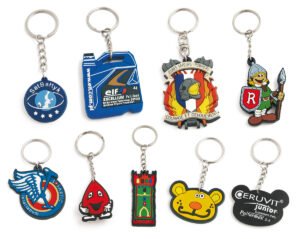Introduction
Plastic recycling plays a crucial role in reducing the environmental impact of plastic waste and conserving valuable resources. By implementing effective recycling practices, we can minimize the amount of plastic ending up in landfills or polluting our oceans. In this article, we will explore the principles of plastic resource recycling and discuss the machinery that is commonly used in the recycling process.
Principles of Plastic Resource Recycling
1. Collection and Sorting: The first step in plastic recycling is the collection and sorting of plastic waste. This involves gathering plastic materials from various sources, such as households, businesses, and industrial facilities. The collected plastic is then sorted based on its type, color, and quality. Sorting is essential to ensure that only suitable materials are processed further.
2. Shredding and Grinding: Once the plastic waste is sorted, it undergoes shredding and grinding processes. Shredding breaks down the plastic into smaller pieces, while grinding further reduces the size to create plastic flakes or granules. This step increases the surface area of the plastic, making it easier to process in subsequent stages.
3. Washing and Cleaning: After shredding and grinding, the plastic flakes or granules go through a washing and cleaning process. This removes any contaminants, such as dirt, labels, adhesives, or other materials that might be present on the plastic. Proper cleaning ensures that the recycled plastic meets quality standards.
4. Melting and Extrusion: The cleaned plastic is then melted and extruded into a new form. This process involves heating the plastic to its melting point and then forcing it through a die to create a specific shape, such as pellets, sheets, or fibers. Melting and extrusion allow the plastic to be molded into various products.
5. Manufacturing of New Products: The final step in plastic recycling is the manufacturing of new products using the recycled plastic. These products can include plastic bottles, containers, packaging materials, furniture, or even clothing. By using recycled plastic, we reduce the demand for virgin plastic production and conserve valuable resources.
Machinery Used in Plastic Recycling
1. Shredders: Shredders are used to break down plastic waste into smaller pieces. They come in various sizes and configurations, depending on the volume and type of plastic being processed. Industrial shredders are capable of handling large quantities of plastic waste efficiently.
2. Grinders: Grinders further reduce the size of shredded plastic into flakes or granules. These machines use rotating blades or hammers to achieve the desired size reduction. Grinders are essential for preparing the plastic for washing and cleaning.
3. Washing Lines: Washing lines are used to clean the shredded and ground plastic. They consist of a series of tanks and machines that agitate the plastic flakes or granules with water and detergent to remove any contaminants. The cleaned plastic is then dried before further processing.
4. Extruders: Extruders are used to melt the plastic and shape it into a specific form. They apply heat and pressure to the plastic, forcing it through a die to create pellets, sheets, or fibers. Extruders play a vital role in the manufacturing of new products using recycled plastic.
5. Molding Machines: Molding machines are used to mold the melted plastic into various shapes and forms. They can be injection molding machines, blow molding machines, or rotational molding machines, depending on the desired product. These machines enable the production of plastic items from recycled materials.
Conclusion
Plastic resource recycling is an essential practice for reducing waste and conserving valuable resources. By understanding the principles of plastic recycling and utilizing appropriate machinery, we can effectively transform plastic waste into new products. The collection, sorting, shredding, washing, melting, and manufacturing processes, along with the use of machinery such as shredders, grinders, washing lines, extruders, and molding machines, contribute to a sustainable and environmentally friendly plastic recycling industry. Let us embrace these principles and machinery to make a positive impact on our planet.










